This is the sixth post in my family culinary history series. To start from the beginning, please see my Connecting with my Ancestors through their Recipes post.
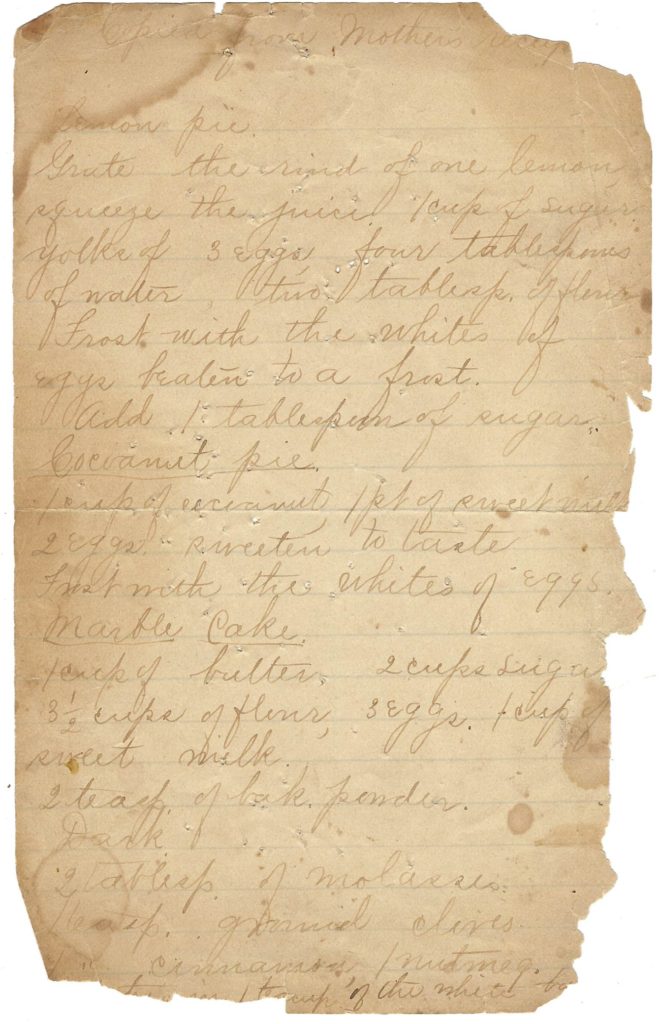
Copied from Mother’s Recipe Lemon Pie
Grate the rind of one lemon
Squeeze the juice. 1 cup of sugar
Yolks of 3 eggs, four tablespoons of water, two tablespoons of flour
Frost with the whites of eggs beaten to a frost
Add 1 tablespoon of sugar
This was the recipe that I was most excited about making since the title implies that it might have even been my great-great-grandmother’s recipe. However, as is becoming a reoccurring theme, this recipe also lacked critical instructions for preparing the pie. It also was missing a critical piece, the crust!
Directions
Luckily, Irene’s manuscript also included several other recipes for lemon pies so by blending what limited directions included with those recipes, I was able to cobble the following instructions together:
Beat well together lemons peel, egg yolks, and sugar, then squeeze in the juice of the lemons and water and flour. Have ready your dish with an under crust, por [sic] it in and bake until done. While it is baking, heat up the whites of the eggs and powdered sugar, spread on the top of the pie, put it in the oven again and brown slightly.
Additionally, I was also able to find an article that leveraged the famous What Mrs. Fisher Knows About Old Southern Cooking cookbook from 1881 to craft the following instructions for a historical lemon pie recipe:
In mixing bowl, cream butter and powdered sugar. Separate the yolks from egg whites. Reserve both the yolks and the whites. Add the egg yolk to butter-sugar mixture. Beat until light. Beat the whites of the eggs until perfectly light. Add to the others. Take two lemons. Roll them with hands on the board until soft. Zest both lemons and add into preparation. Squeeze juice of the lemons into preparation. Everything should be well mixed together and put in pastry. Bake at 375 for 30 minutes. (Jensen, 2018)
In the end, I ended up baking the pie with the filling for thirty minutes and then baking for an additional ten minutes after “frosting” with the meringue topping.
Crust
Unfortunately, my great-grandmother did not provide a recipe for the crust that was intended to go along with this recipe; however, there was a pie crust recipe listed elsewhere in her manuscript which I assume she intended to be used in this recipe.
Pie crust
Mix 2 ½ cups of sifted flour with ½ cups of lard, ½ cup of butter, salt, and ½ cup of cold water
However, while I now had a crust recipe, I now had more questions such as how to combine the ingredients correctly, how long and at what temperature to bake the crust, how to find lard as I have never used it as an ingredient, and how much salt to use.
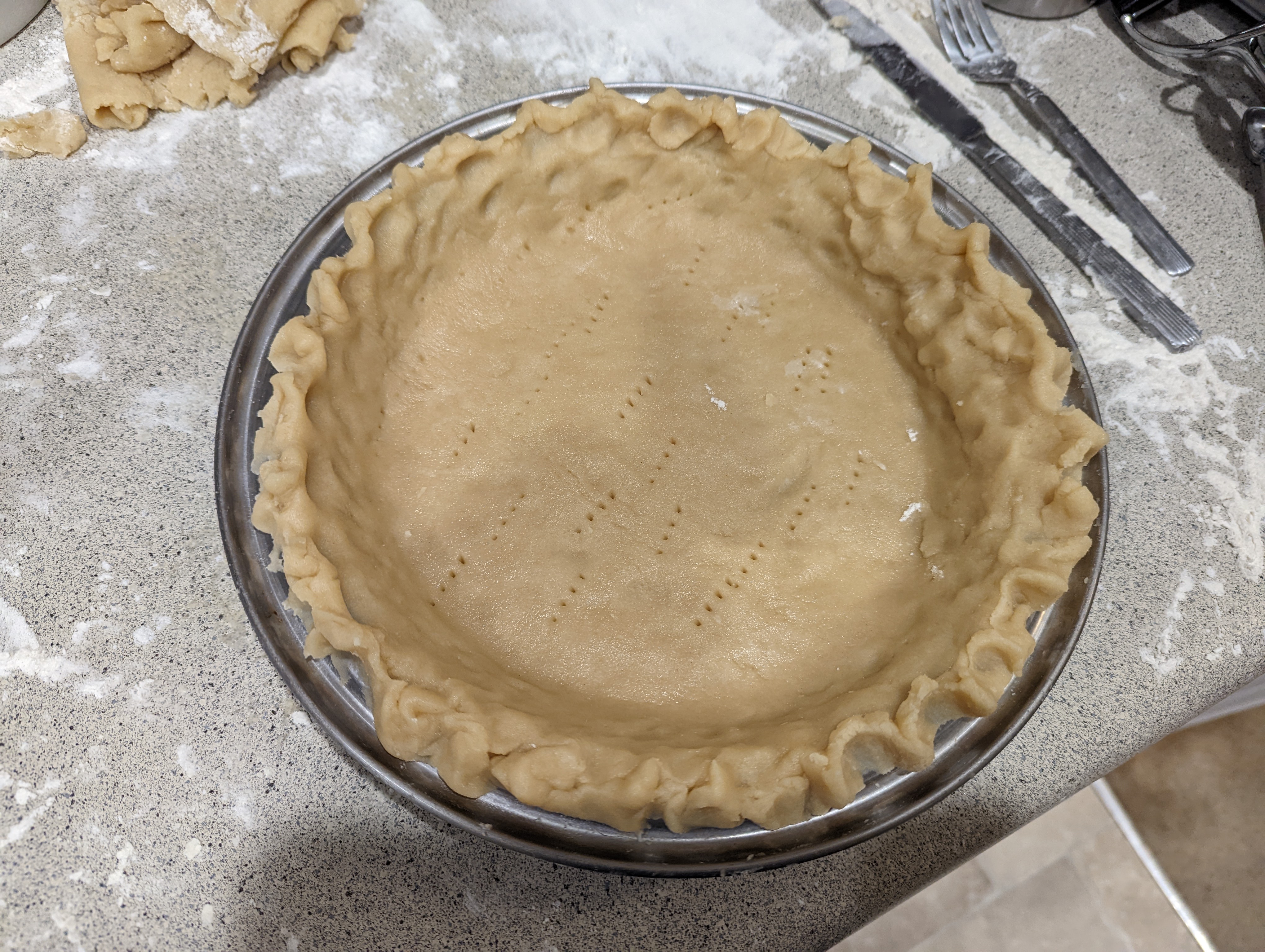
Leveraging my own experience making pie dough combined with a quick google search and a recipe I found in a Better Homes and Garden magazine, I ended up using a ½ a teaspoon of salt and combining all the ingredients except for the water together and then adding the water slowly until the dough started to come together (Better Homes and Gardens, 2013).
As for baking, I put a double layer of foil on top of the crust, weighted down with pie weights, and baked it for eight minutes and then a further eight minutes without the foil and pie weights.
Overall, this approach appears to have worked; however, one thing that I did not even consider as a possible issue was the number of portions the crust recipe might make. I ended up with a lot of dough leftover, and I did not even roll out the crust as thin as I should have so I would have had even more leftover dough! My assumption is that the recipe was actually scaled for multiple pies or could have been meant for a pie that also required a top crust.
Rotary Beater
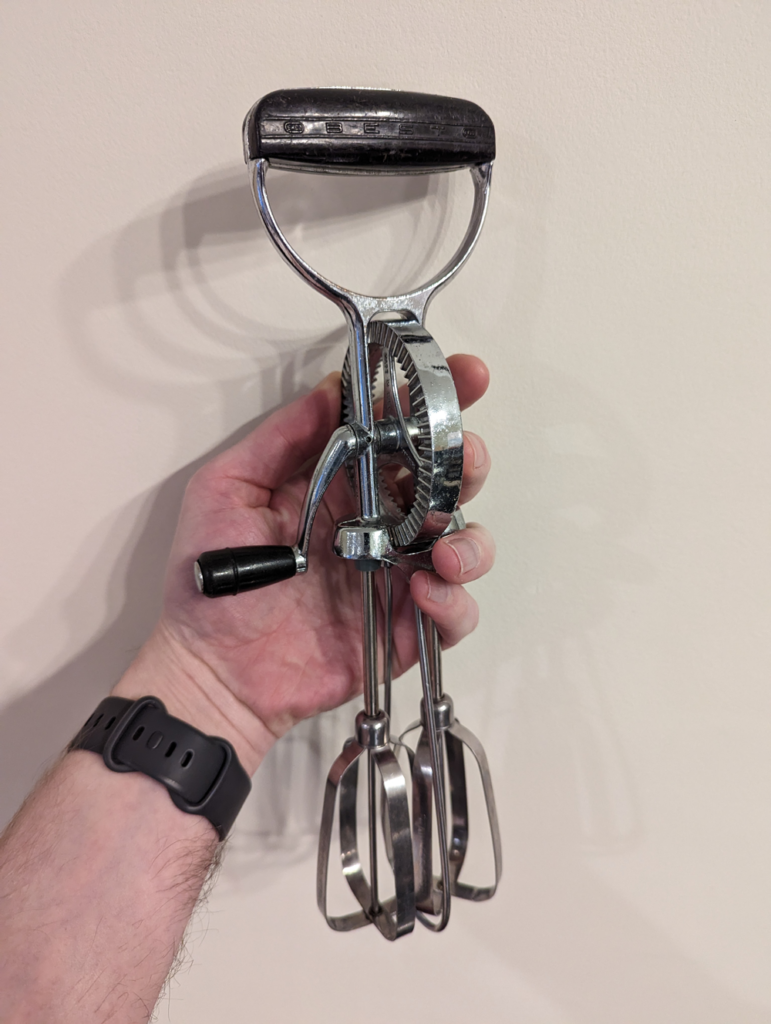
While searching for the bakeware to make this dish, I came across a rotary beater that I had forgotten I even owned. Figuring that it was a less anachronistic tool for my great-grandmother’s kitchen than an electric beater, I decided to use it to make the meringue for the topping.
I knew that using it would require considerable more effort to get the meringue to whip up enough, but it really helped me better embody what Giard (1998) would term “gestures” that my great-grandmother would have gone through while making the pie which gave me a better understanding her life and perspective.
Video and Tasting!

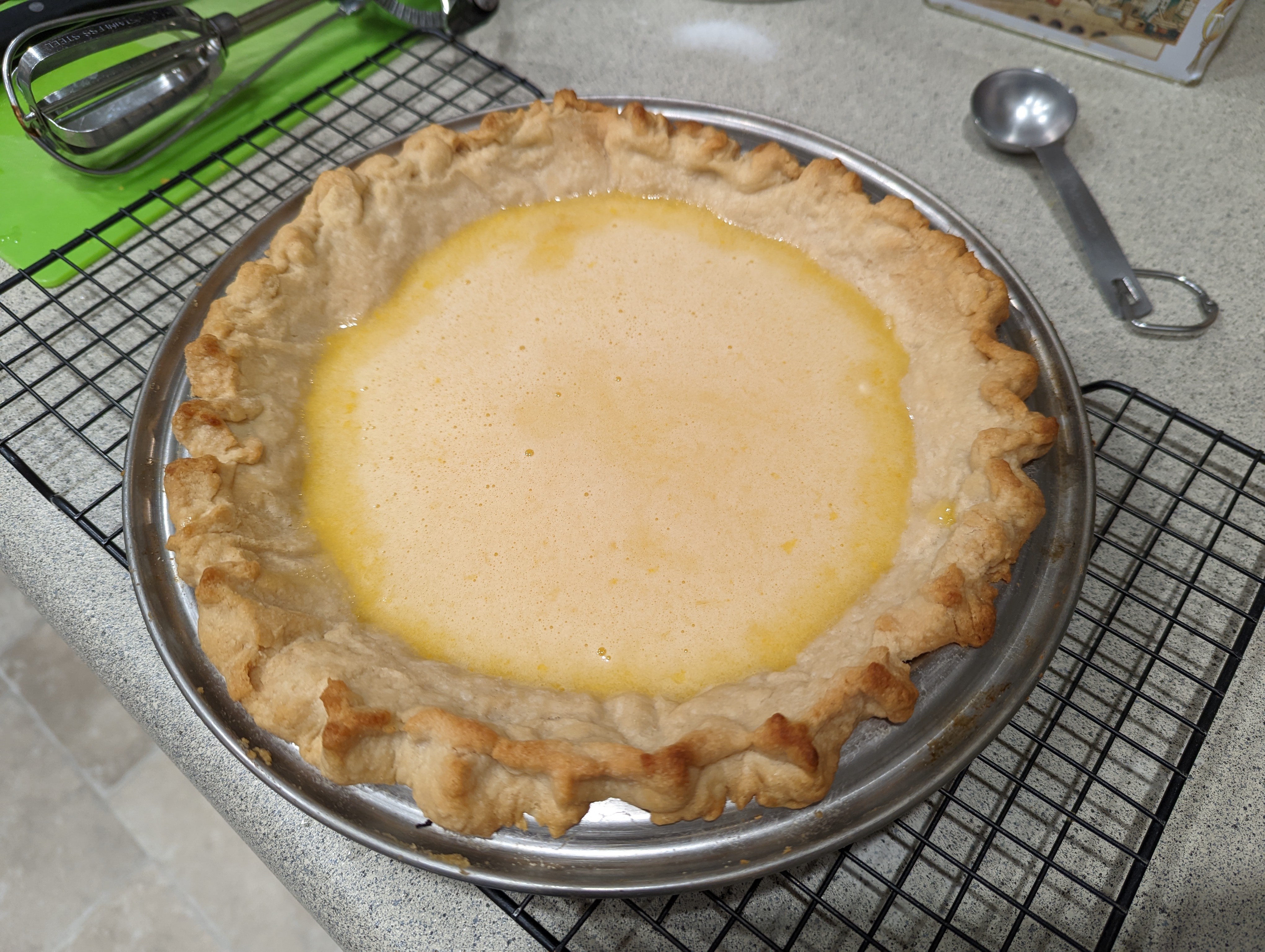
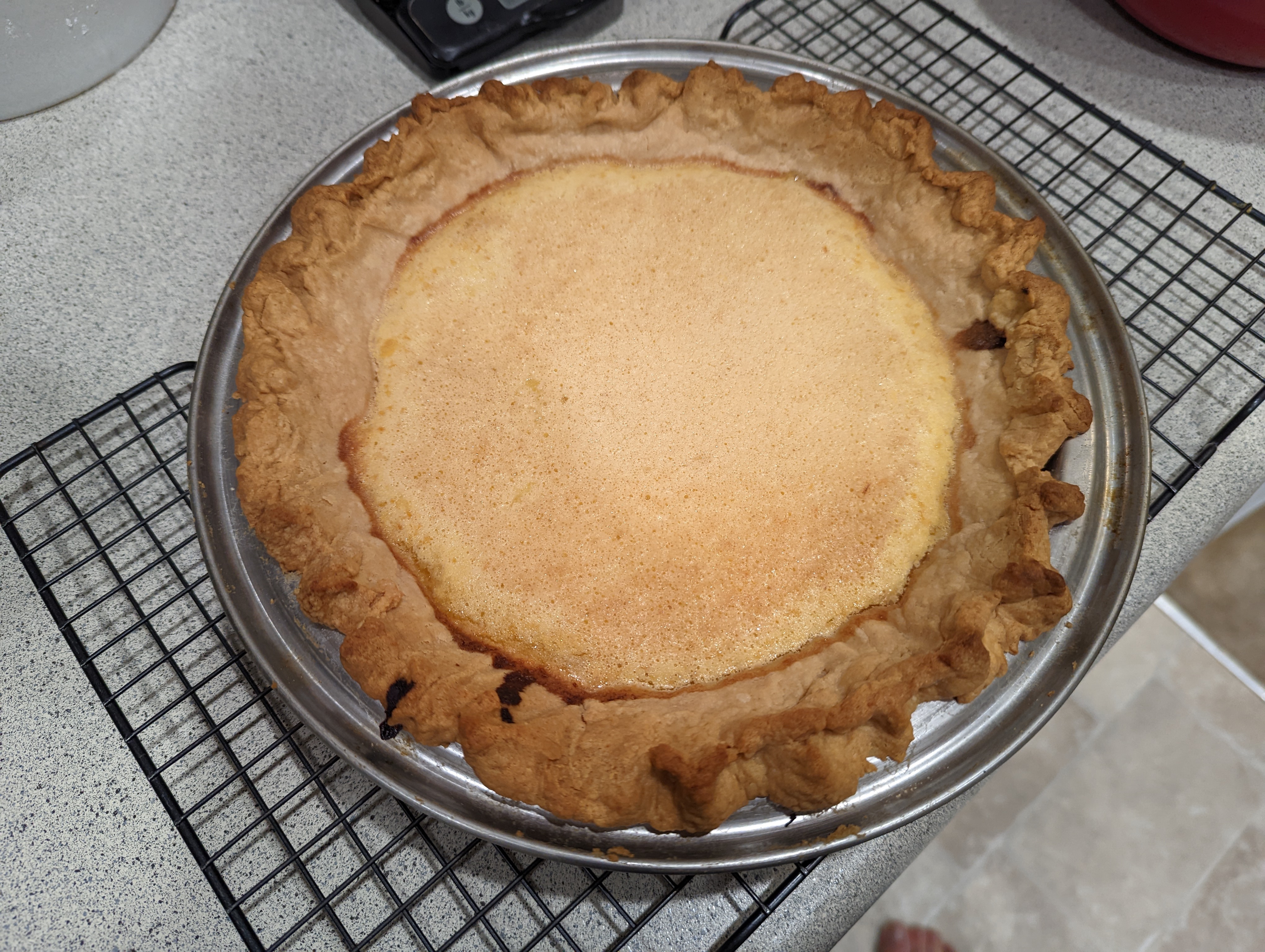
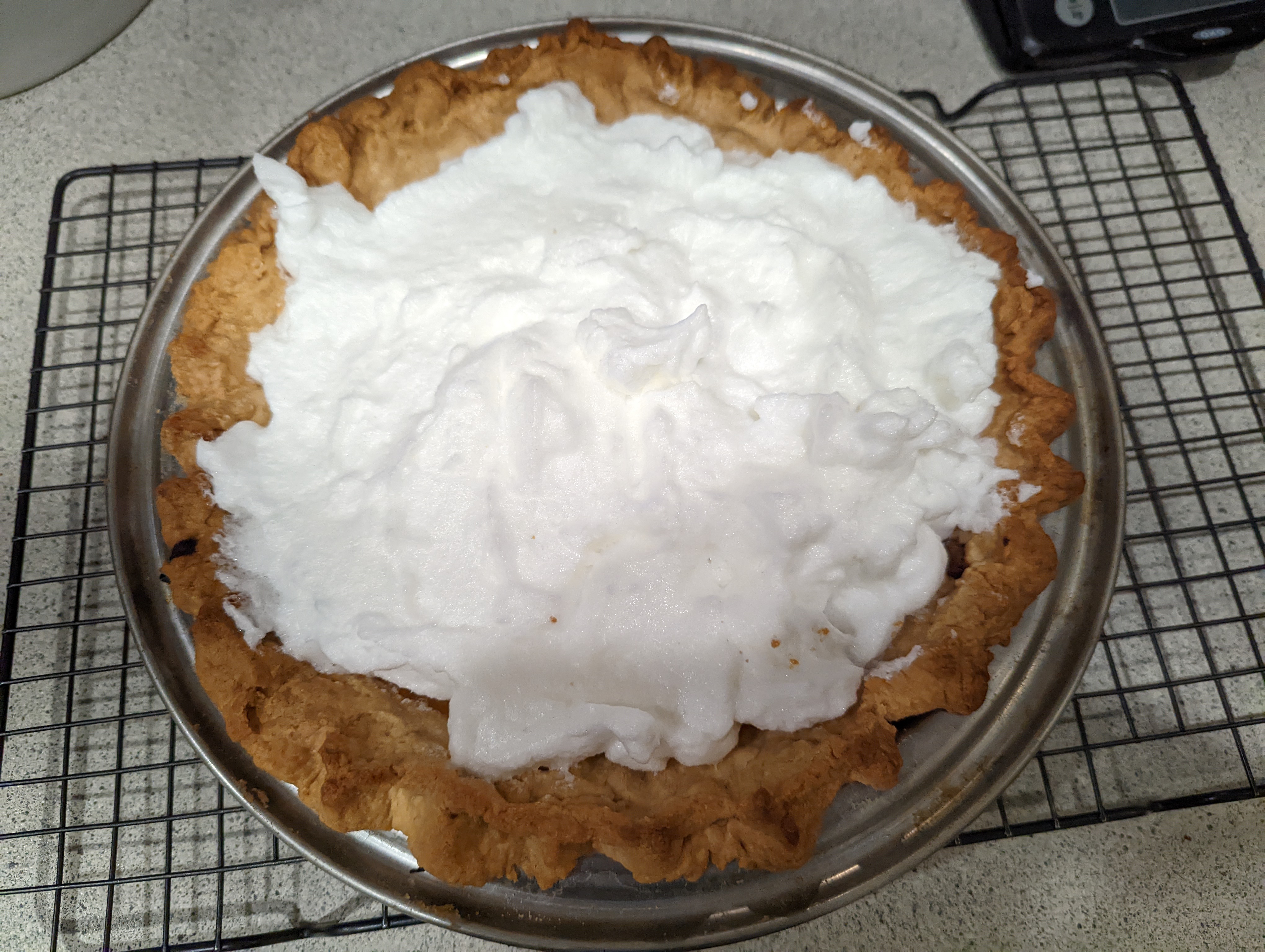
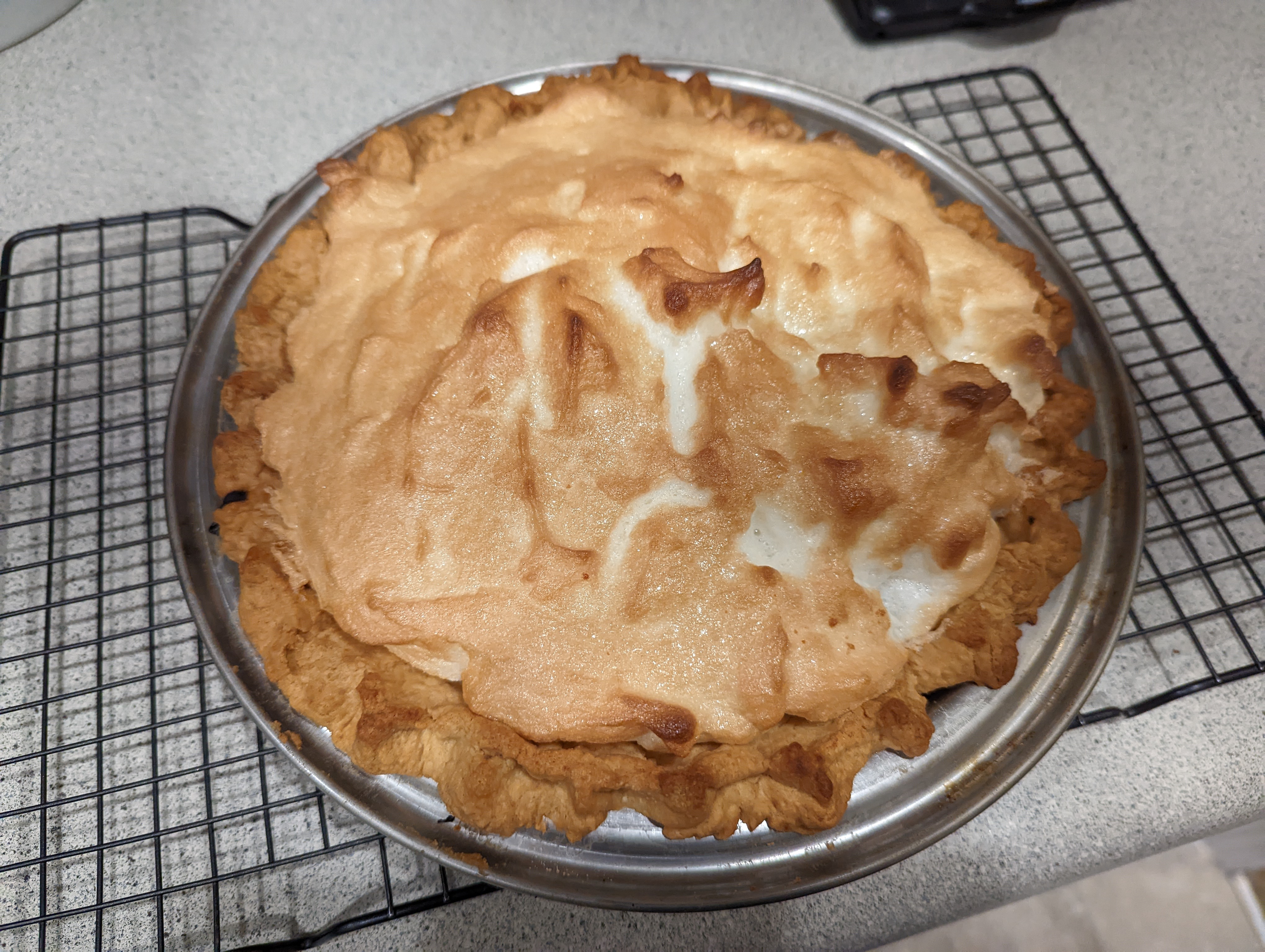
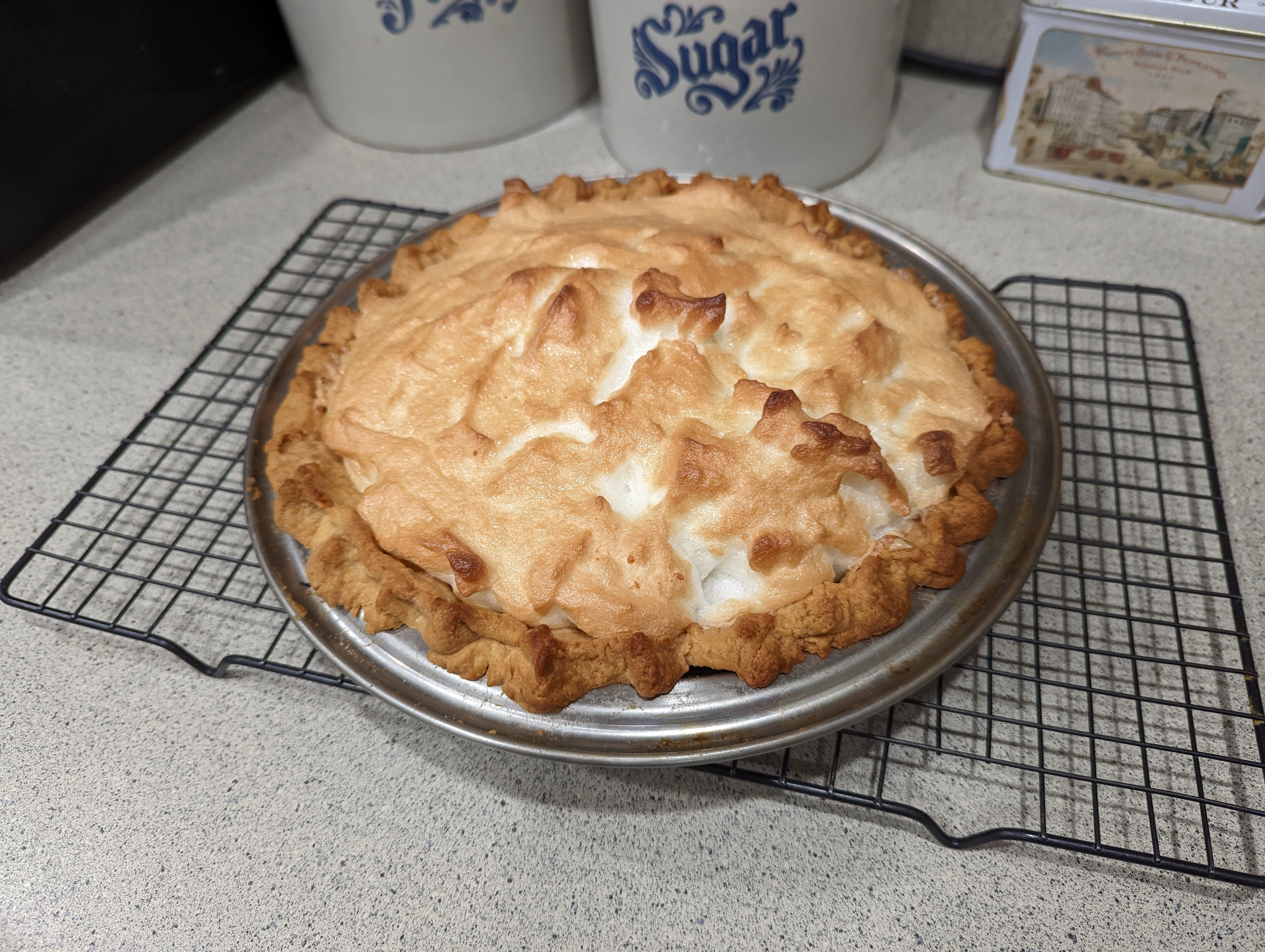
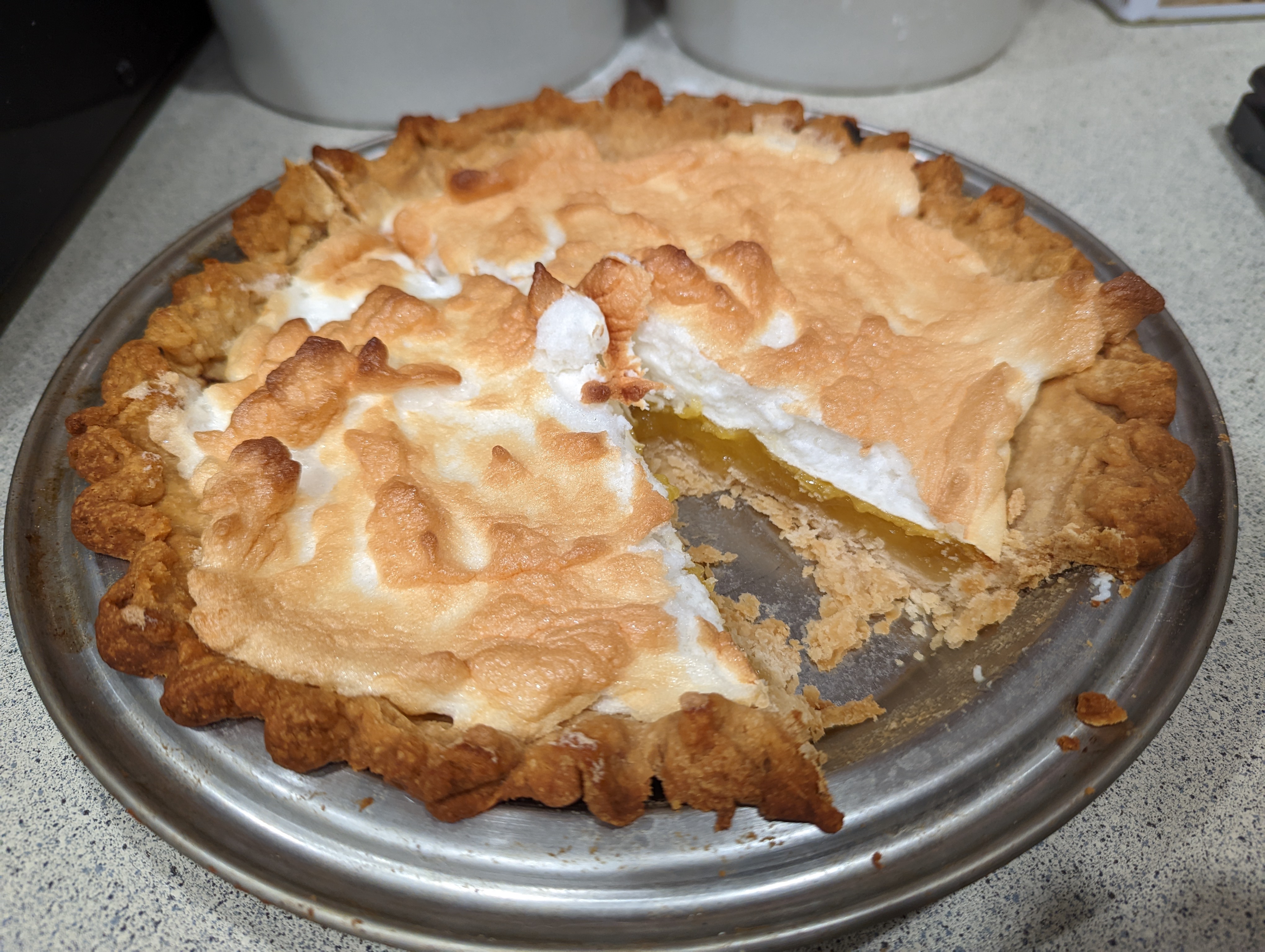
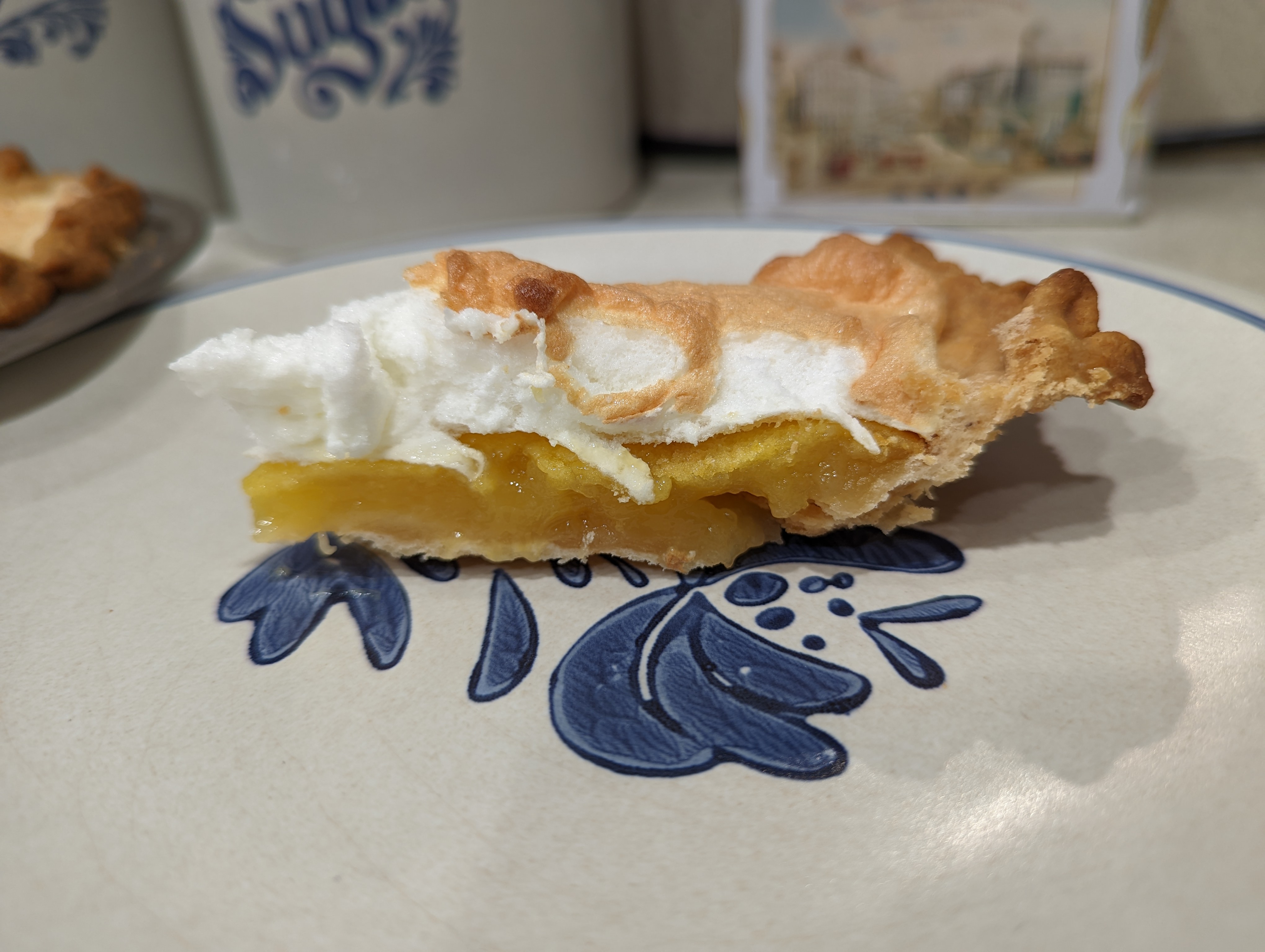
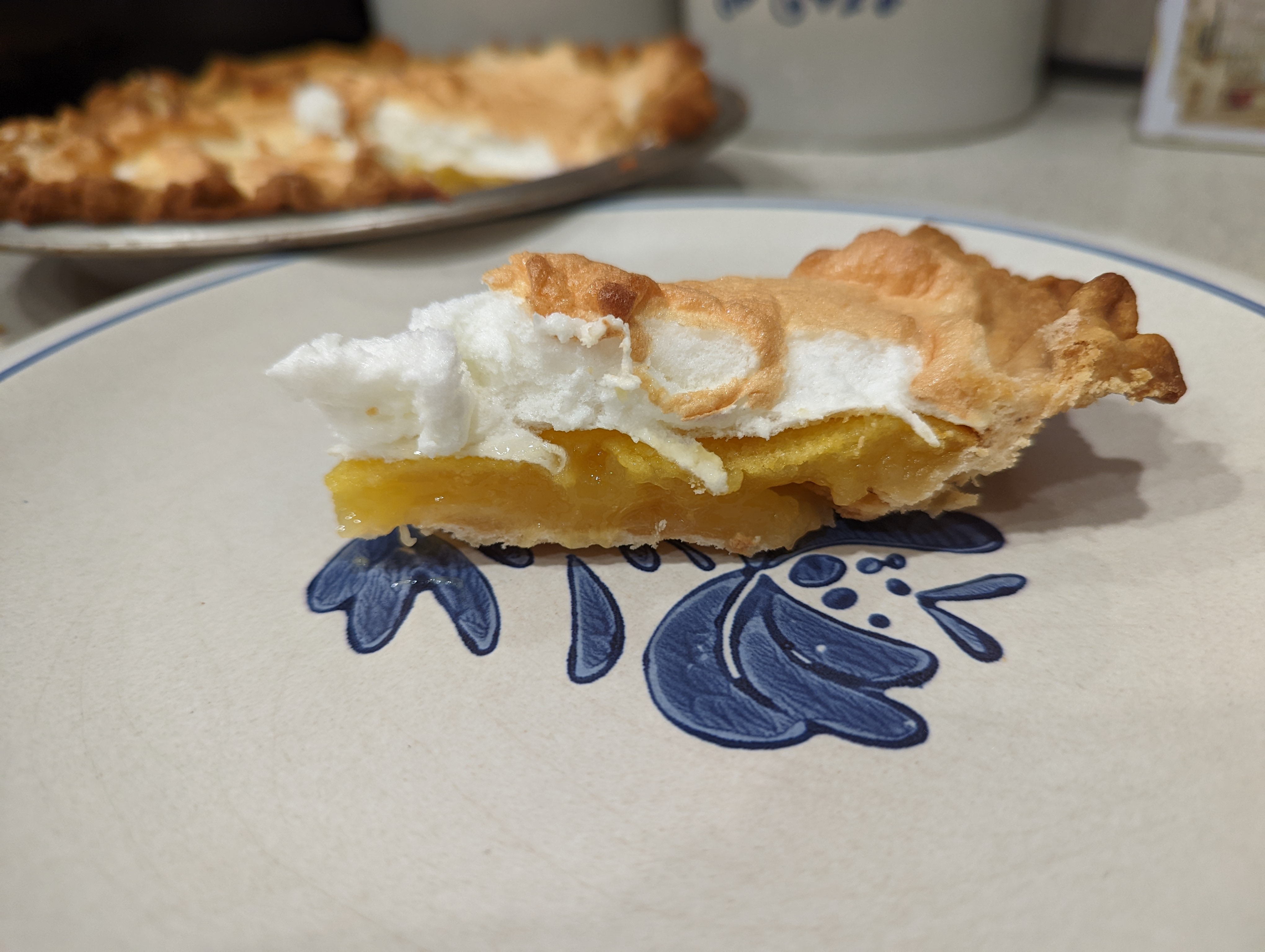
Updated Recipe

Irene Caron’s Mother’s Lemon Pie
Single Crust
1¼ cup all-purpose flour, sifted
¼ cup lard, cold
¼ cup unsalted butter
¼ tsp salt
¼ cup water, cold
Filling
1 lemon, zest and juice
1 cup sugar
3 egg yolks
4 tablespoons water
2 tablespoons all-purpose flour
Meringue
3 egg whites
1 tbsp sugar
Crust
In a large bowl, combine the flour and salt. Then add the lard and butter and mix until it forms coarse crumbs. Next add the cold water and mix until dough begins to cling together. If dough is too dry and not coming together, gradually add more water a tablespoon at a time and mixing well after each addition.
Form into a ball and roll out on a lightly floured flat surface until about a quarter inch thick. Carefully lay on top of a 9 inch round pie pan. Using a knife along the edge of the pie pan, cut off any extra crust and then crimp the edges of the crust. Prick all areas of the crust with a fork several times.
Place sheet of aluminum foil over crust and place pie weights on top. Bake at 375 degrees F for 8 minutes, then remove foil and bake for another 6 to 8 minutes or until the crust is golden brown. Remove from oven and allow to cool slightly before adding filling.
Filling
In a large bowl, beat together lemon zest, egg yolks, and sugar until light and frothy. Then stir in the lemon juice and flour until combined. Pour mixture into prepared crust and bake at 375 degrees F for 30 minutes or until just set.
Meringue
While pie base is baking, beat the egg whites until soft peaks begin to form. Then add in the 1 tbsp sugar and beat until stiff peaks. Spread the meringue on top of baked bottom pie, then put back in the oven again for an additional 10 minutes or until the meringue is cooked and golden brown.
Next Steps: Reflecting on the Assignment
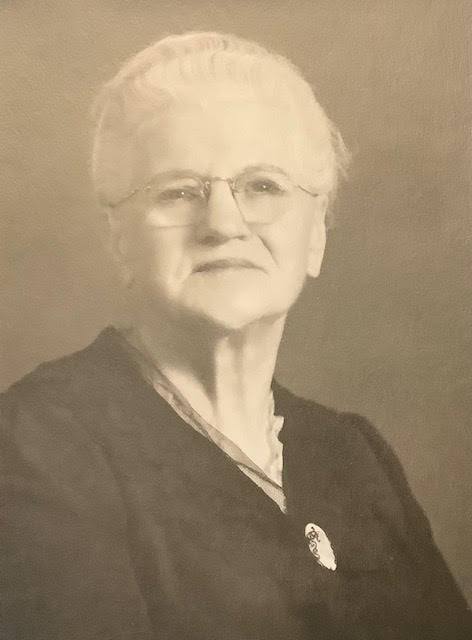
The last part of my assignment was to reflect on the overall process and what I learned through making the recipes.
It was definitely an interesting experience and to hear my reflections on the process read my Irene’s Recipes # 7: Reflecting on Communing With My Great-Grandmother Assignment post!
After that, I plan on continuing to make more of my great-grandmother’s recipes.
Resources
Better Homes and Gardens. “Lemon Meringue Pie” and “Baked Pastry Shell.” Better Homes and Gardens Cook’s Secrets, 2013. pgs. 135-136.
Giard, Luce. 1998. “The Nourishing Arts” and “Gesture Sequences.” In The Practice of Everyday Life, Vol. 2: Living and Cooking, by Michel de Certeau, Luce Giard, and Pierre Mayol, 151-159, 199-213. Trans. Timothy J. Tomasik. Minneapolis: University of Minnesota Press.
Jensen, James. 2018. “Vintage Lemon Pie Recipe From 1881: Tangy and Sweet.” Toasty Kettle: Connecting With the Past Through Food. Last modified October 28, 2018. Date of access November 4, 2022. https://www.toastykettle.com/2018/10/28/vintage-lemon-pie-recipe-from-1881-tangy-and-sweet/